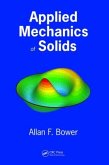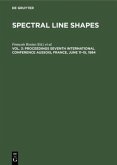

Gebundenes Buch
1. Oktober 2009
CRC Press / Taylor & Francis
| eBook, ePUB | 105,95 € | |
| eBook, PDF | 105,95 € |
Ähnliche Artikel

Broschiertes Buch
May 29¿June 3, 1989 Strobl
1991
20. September 2011
B.G. Teubner / Springer / Springer Netherlands
978-94-010-6802-4

Gebundenes Buch
Why Growth is Slow but Collapse is Rapid
1st ed. 2017
7. September 2017
Springer / Springer International Publishing / Springer, Berlin
978-3-319-57206-2

Broschiertes Buch
Classical Trajectory Correlations and Wave Interference
2012
22. Februar 2014
Springer / Springer Berlin Heidelberg / Springer, Berlin
978-3-642-44061-8

Broschiertes Buch
2012
3. März 2014
Springer / Springer US / Springer, Berlin
978-1-4899-9447-9

Broschiertes Buch
From Foundations to Applications
Softcover reprint of the original 1st ed. 2015
9. Oktober 2016
Editorial URSS / Springer / Springer International Publishing / Springer, Berlin
978-3-319-35528-3

Gebundenes Buch
1st ed. 2016
14. November 2016
Springer / Springer International Publishing / Springer, Berlin
978-3-319-39091-8

Gebundenes Buch
1985.
1. April 1985
De Gruyter

Gebundenes Buch
Proceedings of the Ninth International Symposium, Atlanta, Georgia, USA, June 7-12, 1987
1987.
1. Dezember 1987
De Gruyter

Gebundenes Buch
1st ed. 2018
22. Januar 2018
Springer / Springer International Publishing / Springer, Berlin
978-3-319-66968-7

Broschiertes Buch
2011
28. September 2014
Springer / Springer Netherlands
978-94-007-9009-4
Ähnlichkeitssuche: Fact®Finder von OMIKRON
